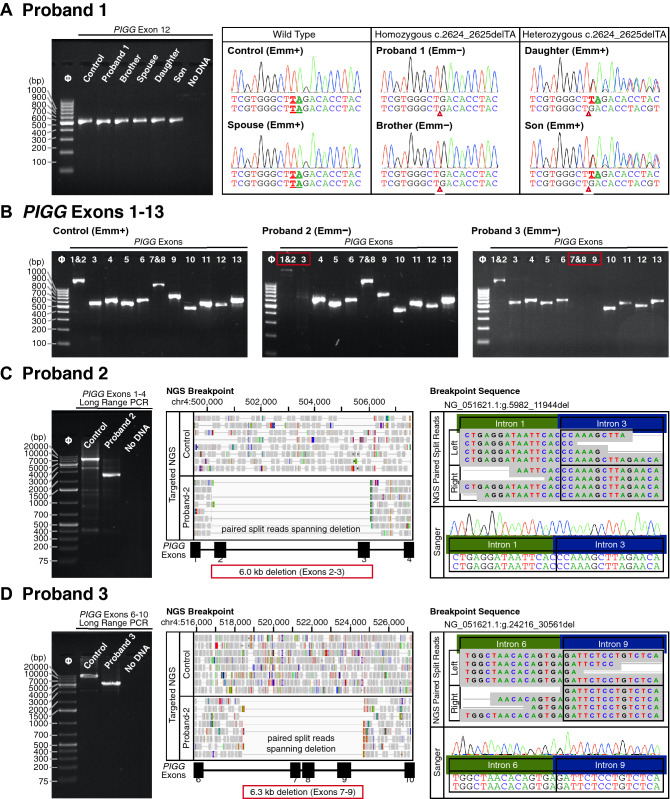Figure 2.
(A) PIGG Exon 12. Products ~ 506 bp were amplified from a Emm+ control sample and the family of Proband 1 (left) and Sanger sequencing (right) confirmed the homozygous 2-bp deletion in the Emm− brothers, the wild type sequence of the spouse, and heterozygosity for the daughter and son. (B) Amplification of PIGG Exons 1 through 13. Amplified products covering the 13 Exons are shown. Exons 1 & 2 and 7 & 8 were designed to be amplified as a single product. Exons 2–3 did not amplify in the sample from the Japanese Proband 2 and Exons 7–9 did not amplify in that from the European Proband 3. (C) Proband 2 deletion breakpoints. Amplification of Exons 1–4 in the sample from the Japanese Proband 2 indicate an approximate 6.0 kb deletion in PIGG compared to the control (left). Targeted NGS indicated a breakpoint spanning the region of Exons 2 and 3 compared to control (middle). Analysis of paired split reads aligned to both the left and right side of the deletion [g.5982_11944del, p.(Ala53Glyfs*2)] showed reads spanning the breakpoint in Intron 1 and Intron 3 (representative reads shown), and Sanger sequencing confirmed the breakpoint sequence (right). (D) Proband 3 deletion breakpoints. Amplification spanning Exons 6–10 in a sample from the European Proband 3 indicates an approximate 6.3 kb deletion in PIGG compared to the control (left). Targeted NGS indicated a breakpoint spanning the region of Exons 7 through 9 (middle). Analysis of the paired split reads aligned to both the left and right side of the deletion [g.24216_30561del, p.(Asp372Alafs*18)]] showed reads spanning the breakpoint in Intron 6 and Intron 9 (representative reads shown), and Sanger sequencing confirmed the breakpoint sequence (right).

